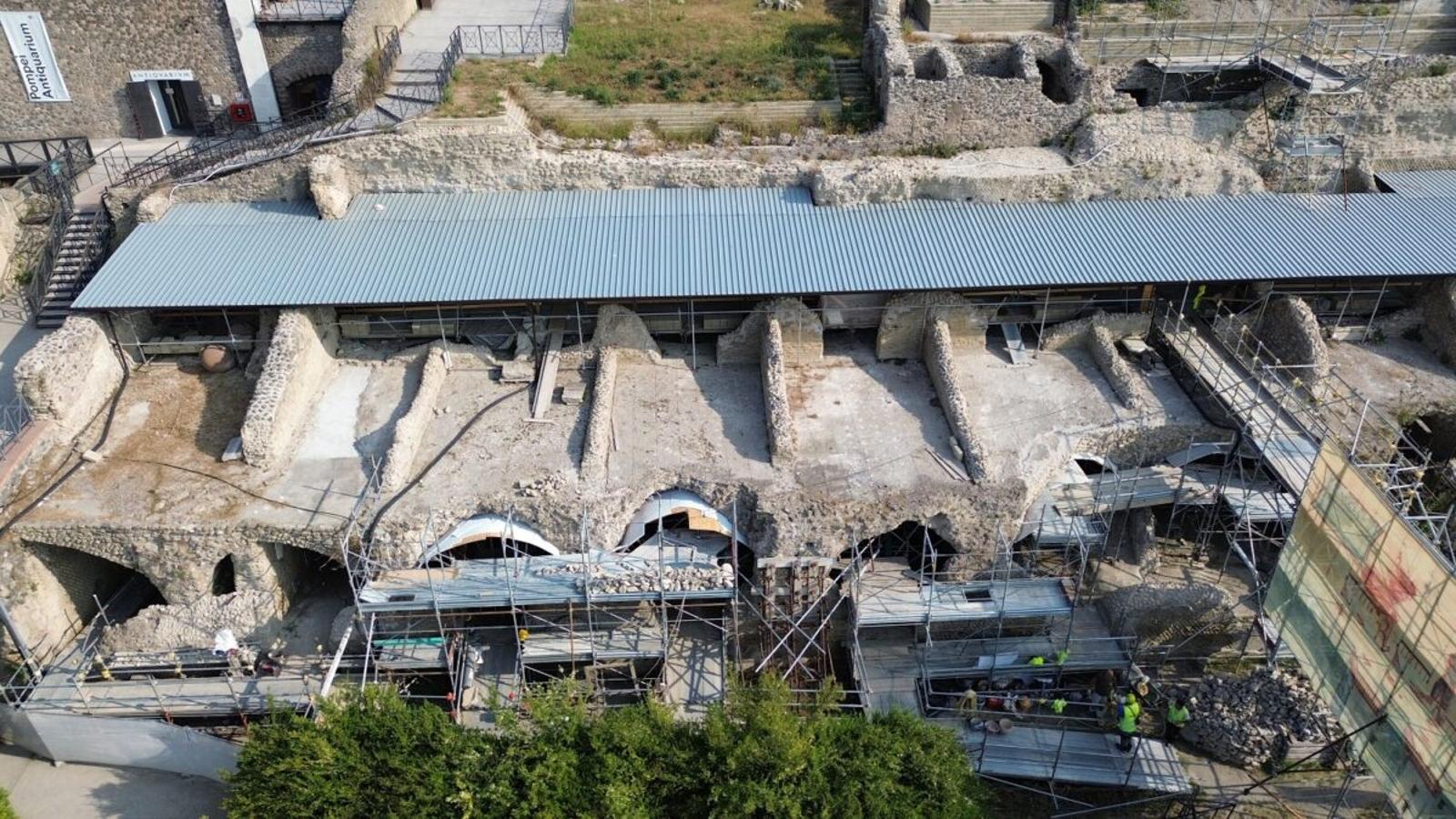New excavations reveal that Pompeii was occupied after the eruption of Vesuvius.
The Roman city became a refuge for people who had nowhere else to go.

BarcelonaPompeii did not rise from the ashes. After the eruption of Vesuvius in 79 AD, there was no reconstruction, but the Roman city was not completely abandoned. New archaeological data, as explained by the Pompeii Archaeological Park in a press release, show that after the volcano violently released a deadly cloud of ash and gases, some returned. Most did so because they lacked many alternatives.
The discovery was made during the maintenance and restoration of Pompeii's Insula Meridionalis. The upper floors of the buildings were converted into spaces for cooking, sleeping, and even small mills. It is estimated that Pompeii had around 20,000 inhabitants before the eruption. So far, about 1,300 victims have been found, a low figure—approximately 10%—considering that much of the city has already been excavated. Many must have died outside the urban center, in their flight, but there is evidence that some survived and, without resources to start over elsewhere, chose to return.
Very precarious conditions
These inhabitants would have been joined by people who also had nowhere to sleep. At first, they lived in the middle of an ash desert; later, vegetation began to regrow, and the ruins were even excavated to recover valuables. Emperor Titus attempted to refound Pompeii and Herculaneum. However, the operation was unsuccessful: Pompeii never again became the vital center it had been. What remained was a makeshift settlement, without the services or infrastructure of a Roman city, which lasted until the 5th century, perhaps until another devastating eruption, known as Pollena.
"The destruction of 79 AD monopolized memory," explains Gabriel Zuchtriegel, director of the archaeological park. "In the rush to uncover intact frescoes and spectacular artifacts, traces of the reoccupation were literally erased. Now, with the new excavations, a field is emerging among the new excavations; a favela within the petrified city. As archaeologists, we act as psychologists of buried memory: we recover what history had hidden."
